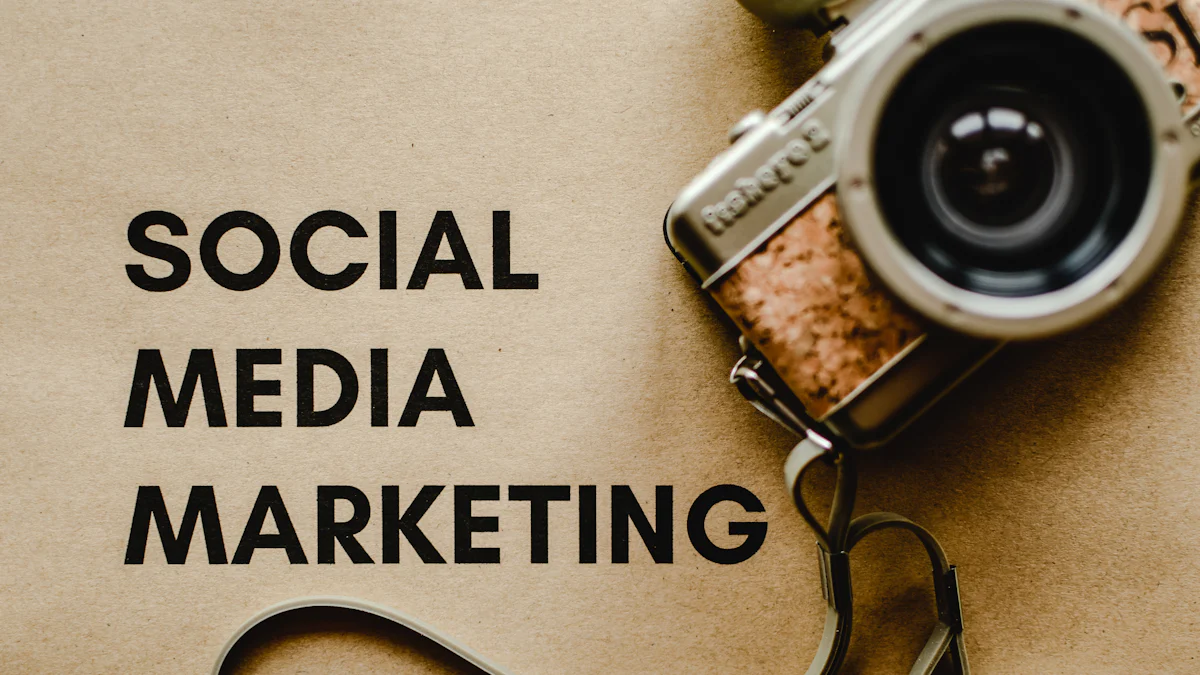Why Emotional Triggers Are the Secret to Viral Content in 2025

Have you ever wondered why some posts explode with likes and shares while others fade into the background? It all comes down to emotional responses. Research shows that content connecting with emotions—like joy, surprise, or even anger—has a higher chance of going viral. A study analyzing 100 pieces of content using the Pleasure-Arousal-Dominance model found that emotional triggers directly influence sharing behavior. Positive emotions like joy uplift, while anger sparks conversations. By tapping into these feelings, you can create viral content that drives engagement and answers the question, "how does content go viral?"
The Emotional Science Behind Viral Content

Emotional Dimensions and Their Role
Valence: Positive vs. Negative Emotions
Valence is all about whether an emotion feels positive or negative. Think of joy, which uplifts, versus sadness, which pulls you down. Viral content often leans on positive emotions like happiness or surprise because they make people feel good. But don’t underestimate the power of negative emotions. Anger, for example, can spark heated discussions and drive engagement. Research shows that valence plays a key role in answering the question, "how does content go viral?" Positive emotions encourage sharing, while negative ones often lead to debates and comments.
Arousal: High-Intensity vs. Low-Intensity Emotions
Arousal measures how intense an emotion feels. High-arousal emotions like excitement or outrage grab attention and push people to act. On the other hand, low-arousal emotions, such as calmness, might not inspire the same level of engagement. Studies reveal that high-arousal emotions are the secret sauce behind viral content. They create urgency, making people more likely to share or comment. Whether it’s joy or anger, the intensity of the feeling matters.
Dominance: Feeling in Control vs. Powerless
Dominance refers to whether an emotion makes you feel in control or powerless. High-dominance emotions, like pride, often lead to sharing because they empower people. Low-dominance emotions, such as fear, tend to spark discussions instead. Viral content thrives when it balances these emotional factors. For example, a motivational story might make someone feel inspired (high dominance), prompting them to share it with others.
| Emotional Dimension | Description |
|---|---|
| Valence | Positivity or negativity of an emotion. |
| Arousal | Level of excitement different emotions elicit. |
| Dominance | Feeling in or out of control. |
Why Emotional Triggers Drive Sharing
Emotional Resonance and Human Behavior
Have you ever shared a post because it just “clicked” with you? That’s emotional resonance in action. When content aligns with your feelings or experiences, it creates a connection. This connection transforms you from a passive viewer into an active sharer. Emotional responses like joy, surprise, or even outrage make content memorable. They also answer the question, "how does content go viral?" By tapping into shared human experiences, emotional factors make content relatable and worth sharing.
The Brain's Reward System and Emotional Content
Your brain loves rewards, and emotional content delivers them. When you share something that makes you laugh or cry, your brain’s reward system lights up. The medial prefrontal cortex, a part of the brain involved in processing emotions and rewards, plays a big role here. It’s why you feel good after sharing a funny meme or an inspiring story. This neural connection between emotions and rewards explains why emotional responses are so powerful in driving engagement.
Emotional Combinations That Make Content Go Viral
Positive Emotional Pairings
Joy and Surprise: The Key to Shareability
Pairing joy with surprise is like creating a recipe for instant shareability. When people feel happy and encounter something unexpected, they’re more likely to share it. Think about the Android "Friends Furever" campaign. It featured adorable, unlikely animal friendships that made viewers smile while surprising them with the unexpected bonds. This combination led to over 24 million views on YouTube. Joy and surprise work because they make people feel good and give them something fresh to talk about. It’s no wonder this pairing is a cornerstone of viral content.
Inspiration and Admiration: Motivating Action
Inspiration and admiration are powerful motivators. They make people want to act, whether it’s sharing a video or supporting a cause. Dove’s "Real Beauty Sketches" campaign is a perfect example. It highlighted the gap between how women see themselves and how others perceive them. This emotional contrast evoked admiration for the message and inspired viewers to rethink their self-image. With over 66 million views, it’s clear that content combining these emotions can leave a lasting impact.
The Role of Negative Emotions in Virality
Sadness and Empathy: Building Connections
Sadness, when paired with empathy, can create deeply emotional content that resonates with viewers. Viral campaigns often use this combination to tell stories that tug at the heartstrings. For instance, stories about natural disasters or high-profile tragedies evoke sadness but also foster empathy, encouraging people to share and connect. Adding a hopeful resolution, like a recovery story, amplifies the emotional impact and makes the content even more shareable.
Anger and Outrage: Sparking Conversations
Anger might not seem like a good thing, but it’s a powerful driver of engagement. Content that sparks outrage often leads to heated discussions and widespread sharing. While negative emotions like hate or resentment are less common in viral content, anger stands out. It grabs attention and pushes people to voice their opinions. This is why controversial topics or injustices often go viral—they ignite strong feelings and demand action.
The Power of Mixed Emotions
Happiness and Nostalgia: Evoking Warmth
Combining happiness with nostalgia creates a warm, fuzzy feeling that people love to share. Nostalgia takes viewers back to cherished memories, while happiness keeps the mood light and positive. This emotional mix often appears in content celebrating milestones or revisiting iconic moments. It’s a surefire way to make your audience feel connected and eager to share.
Surprise and Fear: Creating Lasting Impressions
Surprise paired with fear creates a unique emotional cocktail that sticks with people. This combination works because it grabs attention and keeps viewers on edge. Viral content using this mix often includes shocking twists or suspenseful storytelling. The emotional intensity ensures the content stays memorable, making people more likely to share it with others.
How to Leverage Emotional Triggers for Viral Content
Crafting Emotionally Resonant Stories
Relatable Characters and Scenarios
Stories that stick with people often feature characters they can relate to. When you create characters with clear desires or struggles, you tap into universal emotions. For example, a video about a rescue dog finding a forever home resonates because it mirrors real-life hopes and challenges. Campaigns like the Ice Bucket Challenge or Dove’s Real Beauty Sketches succeeded because they used relatable scenarios that connected emotionally with their audiences. To make your content memorable, focus on characters and situations that reflect shared human experiences.
Building Tension and Resolution
Great stories keep people hooked by building tension and then resolving it. This technique works because it mirrors how we process emotions in real life. You can create tension by introducing a challenge or conflict, then resolve it with a satisfying conclusion. For instance, a motivational story about overcoming adversity can inspire and drive high levels of sharing. By weaving emotional arcs into your content, you’ll keep your audience engaged and eager to share.
Using Visual and Verbal Cues
Color Psychology in Content Design
Colors can evoke powerful emotional responses. Red, for instance, creates excitement and urgency, while blue fosters trust and calmness. Using the right colors in your visuals can amplify the emotions you want your audience to feel. If you’re crafting a campaign to inspire action, red might be your go-to. For content that builds trust, blue could be more effective. Thoughtful color choices can make your content more emotionally impactful and boost social engagement.
Emotionally Charged Language
Words matter. Using emotionally charged language can make your content more compelling. Simple, direct statements that acknowledge your audience’s feelings can create a strong connection. For example, instead of saying, “This is a good cause,” you might say, “This could change someone’s life.” The right words can amplify emotions like joy, empathy, or even outrage, making your content more shareable.
Timing and Context for Maximum Impact
Aligning Content with Trends and Events
Timing is everything when it comes to viral content. Aligning your message with current trends or events can make it more relevant and engaging. For example, during the holiday season, content that evokes joy or nostalgia tends to perform well. By tapping into what’s happening in the world, you can create emotional responses that resonate with your audience.
Understanding Audience Emotional States
Knowing how your audience feels is key to creating content that drives engagement. People are more likely to share content that aligns with their emotional state. If your audience feels optimistic, uplifting content will likely perform better. On the other hand, if they’re frustrated about a social issue, content that channels their anger into action can spark conversations. By understanding your audience’s emotions, you can craft content that feels personal and relevant.
Case Studies: Viral Content Fueled by Emotional Triggers

Successful Campaigns in 2025
Joy and Surprise in a Viral Marketing Campaign
Joy and surprise are a winning combination when it comes to creating viral content. In 2025, an apparel brand nailed this with their "Mystery Box" campaign. Customers were intrigued by the idea of receiving a surprise item, which sparked curiosity and excitement. This emotional pairing drove massive engagement and boosted sales. Another standout example was an online retailer’s email campaign with the subject line, "Only 3 Hours Left! Don’t Miss Our Biggest Sale of the Year." It used fear of missing out (FOMO) to create urgency, prompting quick action. These campaigns show how tapping into emotions like joy, surprise, and even fear can lead to widespread sharing and customer loyalty.
Sadness and Hope in a Nonprofit Initiative
Nonprofits often rely on emotional storytelling to connect with their audience. In 2025, a charity-focused eCommerce platform shared a moving story about a struggling community. The campaign used sadness to evoke empathy and hope to inspire action. Viewers felt compelled to donate and share the story, amplifying its reach. Another example came from a sustainability campaign that highlighted the devastating effects of plastic pollution. By pairing anger with a hopeful call to action, the campaign motivated people to support eco-friendly products. These examples prove that emotional triggers like sadness and hope can create meaningful connections and drive impactful results.
Lessons from Failed Campaigns
Overuse of Negative Emotions
Negative emotions can be powerful, but overusing them can backfire. Some campaigns in 2025 leaned too heavily on anger or fear, leaving audiences feeling overwhelmed or disengaged. For example, a campaign that focused solely on the dangers of climate change without offering solutions failed to inspire action. People need a balance—negative emotions should highlight the problem, but hope or empowerment should provide the resolution. Without this balance, your content risks alienating your audience.
Lack of Emotional Relevance
Emotional relevance is key to making content resonate. In 2025, some campaigns missed the mark by failing to connect with their audience’s values or experiences. For instance, a luxury brand tried to evoke nostalgia by referencing outdated cultural moments that didn’t resonate with younger audiences. The result? Minimal engagement and no viral traction. To create viral content, you need to understand your audience’s emotional state and craft messages that feel personal and relatable.
Emotional triggers hold the key to creating viral content in 2025. By understanding how emotions like joy, surprise, or even anger work, you can craft stories that stick. Focus on microcontent to grab attention quickly. Use interactive tools like polls or quizzes to keep your audience engaged. AI tools can help you target your audience better, while user-generated content builds trust. Don’t forget sustainability storytelling—it resonates deeply with today’s socially conscious consumers. When you combine these strategies, you’ll answer the question, "how does content go viral," and create content that inspires action.
FAQ
What are emotional triggers in content creation?
Emotional triggers are feelings like joy, anger, or surprise that your content evokes in viewers. These emotions drive people to engage, share, or act. Think of them as the secret ingredient that makes your content memorable and shareable.
Why do positive emotions work better for viral content?
Positive emotions like joy or inspiration make people feel good. When they feel good, they’re more likely to share that feeling with others. It’s like spreading happiness—it’s contagious! Positive vibes create a ripple effect that boosts your content’s reach.
Can negative emotions make content go viral?
Yes, but you need balance. Emotions like anger or sadness grab attention and spark conversations. However, pairing them with hope or solutions ensures your audience stays engaged instead of feeling overwhelmed. Without this balance, negative emotions can backfire.
How can I identify the right emotional triggers for my audience?
Start by understanding your audience’s values, interests, and current emotional state. Use surveys, polls, or social media insights to learn what resonates with them. Once you know their emotional preferences, tailor your content to align with those feelings.
Do visuals really impact emotional responses?
Absolutely! Colors, images, and design elements can amplify emotions. For example, warm colors like red evoke excitement, while cool tones like blue create calmness. Pairing the right visuals with your message enhances emotional impact and makes your content more engaging. 🎨
See Also
Exploring The Mindset That Drives Viral Content In 2025
The Reasons Motivational Posts Achieve Virality On Social Media
Strategies For Creating Viral Content On Instagram And TikTok
Essential Tips For Crafting Engaging Viral Videos In 2025
Seven Key Steps To Develop An Effective Brand Strategy In 2025
